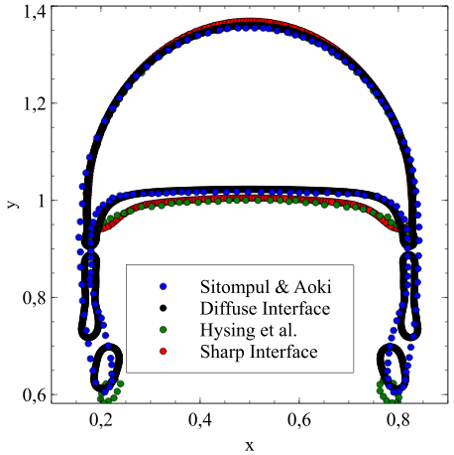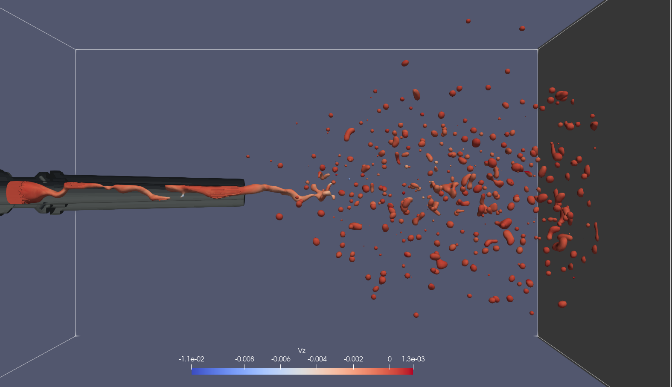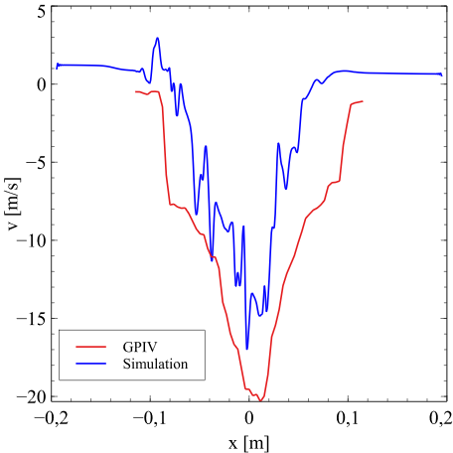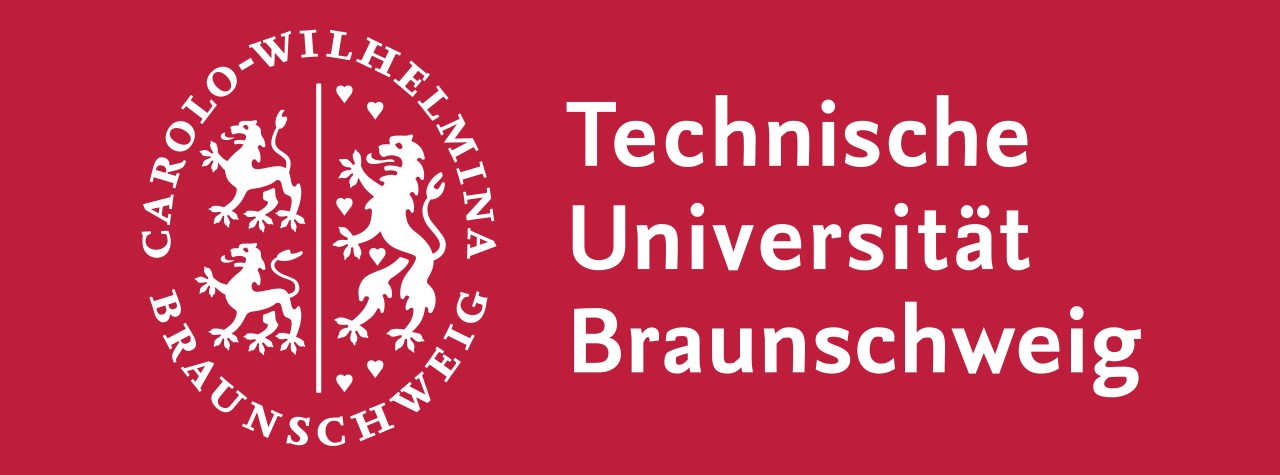Research Summary Report of B03
Modelling and Simulation of Shotcrete 3D Printing (SC3DP) Based on a Massively Parallel Multi-Phase, Multi-Component Coupled LBM-DEM Approach
[10.11.2023]
Kutscher (PostDoc), M. Geier (PI), M. Krafczyk (PI)
TU Braunschweig, IRMB
The primary aim of the project is to understand and quantify the dynamic distribution of material components (fluid, air and particles) and kinetic energy inside the jet of liquid concrete present in the shotcrete process. The information is required as a basis for future optimization of the process with regards to process and material parameters as well as for the prediction of material inhomogeneities.
Summary
In order to overcome the numerical difficulties arising from sustaining a high-density ratio in the diffuse interface lattice Boltzmann model we developed a new sharp interface model which is inspired by free surface flow models but includes the air phase. In this, the domains of liquid and air are numerically separated and their respective influence on each other is modeled through boundary conditions. While we previously used an explicit formulation with pressure boundary condition on the liquid side and a velocity boundary condition of the gas side, we changed this to an implicit formulation for the interface velocity that guaranties the same interface velocity on both sides of the interface in addition to the conservation of momentum. Since the implicit formulation is still local it could be analytically removed such that the algorithm remains explicit and fast.
Current state of research
using a phase indicator to determine whether a point in the domain is in the gas () or in the liquid phase (). The action of the phases onto each other is implemented through boundary conditions, such that inside each domain no modification from the standard fluid solver is required. Due to the large density ratio between the liquid and the gas phase, it is assumed that the liquid is only affected by the pressure of the gas while the gas follows the velocity of liquid immediately. The respective pressure and the interface velocity are obtained through a momentum balance and a matching of the velocities at the interface. An important feature of a sharp interface model using an Eulerian discretization is the initialization of new nodes in either domain. For the initialization of new liquid nodes, a slightly modified boundary condition, applying the same coupling constraints has been derived. Initializing gas nodes by the same method would be ill-conditioned for the pressure. In this case, the pressure is recovered from surrounding gas nodes.
The sharp interface model was validated using a 2D rising bubble problem. Fig. 1 shows the bubble shape at the final time. There are differences with the references, mainly in the bottom and skirt shape of the bubble. However, the diffuse interface model is in better agreement with the reference diffuse interface model (Sitompul & Aoki). The sharp interface model agrees with the reference sharp interface model (Hysing et al.).
The shotcrete jet was simulated using the sharp interface model (Fig. 2). Fig. 3 shows the velocity profile in the flow direction of the shotcrete jet from the simulation and GPIV measurements.









